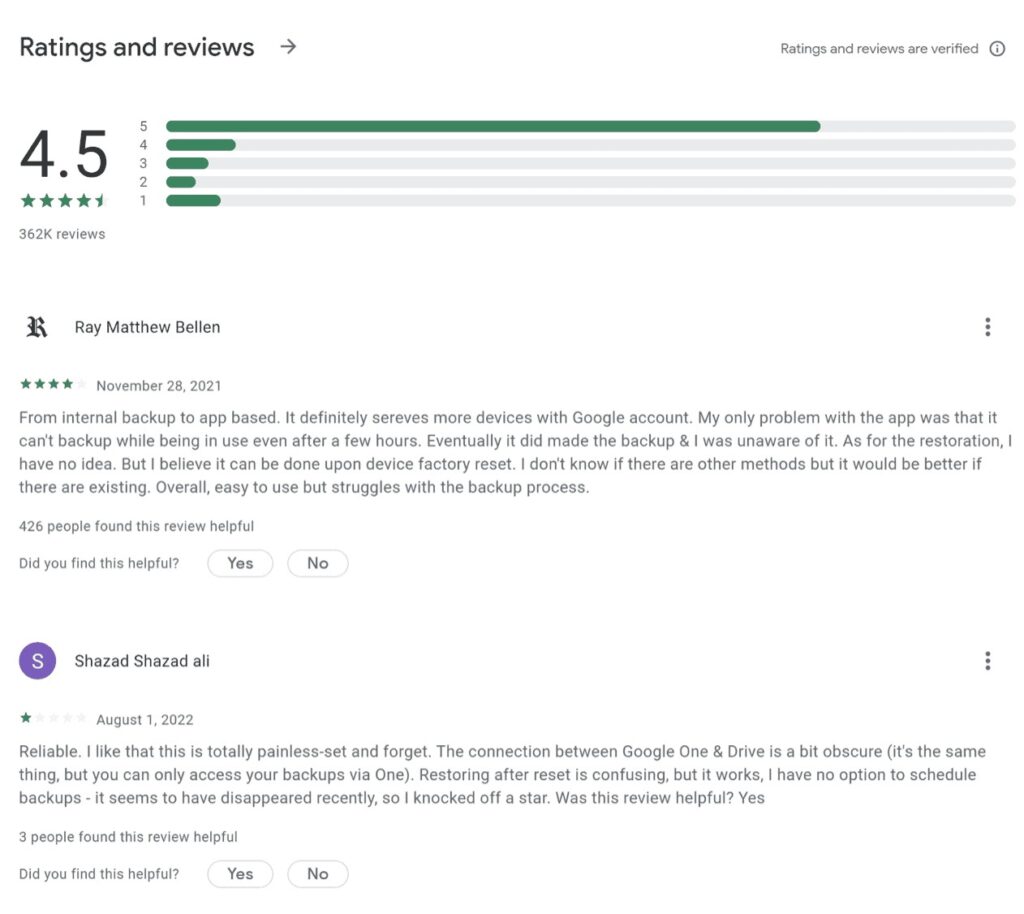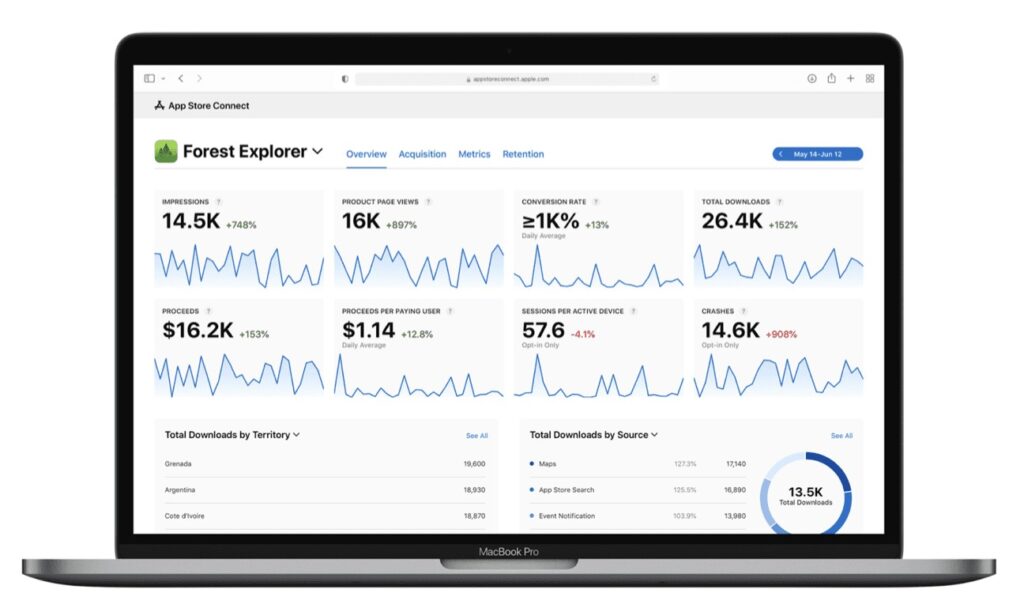
In this post, let us go through the 7 important ASO metrics that will help you determine the effectiveness of your App Store Optimization campaigns. If you are trying to achieve app success, then you need to learn what key performance indicators (KPIs) are and how they work. Read on to learn more!
What is App Store Optimization (ASO)?
App Store Optimization (ASO) is the process of improving your app’s visibility in the app store. By choosing the right app store page elements such as app name, icon, screenshots, app videos, and description, you position your app for better search ranking, get more downloads, and ultimately, increased revenue.
Why should you measure ASO performance?
The main reason you need to measure ASO performance is to accurately determine whether your ASO campaigns have been successful or not.
Image source: Vecteezy
Having the right data and knowing how to interpret them can help you continue best practices, address issues, and ultimately improve the overall performance of your app.
How do you measure ASO performance?
Your app’s visibility on app stores doesn’t automatically increase. You would need to put some effort into ensuring it gets seen by potential users. To do this, you must run ASO campaigns.
After planning and executing your ASO efforts, you need to know how they went. Was it successful? Were you able to meet your goals? Did your efforts help you increase your visibility and downloads?
To answer these questions, you need concrete numbers to back up your conclusion. You’re groping in the dark if you blindly make conclusions about your ASO performance and make decisions based on assumptions.
7 Key ASO Metrics
As they say, you can’t improve something you don’t measure and that’s definitely true when it comes to ASO.
To make data-driven decisions, you need to measure key metrics. That’s what you’re going to learn below.
Here are the top 7 metrics you need to track.
7 Key ASO Metrics |
1. Conversion rate |
2. Keyword ranking |
3. Top charts rankings |
4. Category rankings |
5. Ratings |
6. Downloads |
7. Revenue |
Image source: Unsplash
1. Conversion rate
Conversion rate computes the number of people who saw your app or ad versus how many of those people perform your desired action. As you can imagine, the conversion rate can quickly give you an idea of whether your ASO campaign has been successful or not. No wonder a lot of people use conversion rate as their main KPI.
The conversion rate measures a lot of things. Here are some examples:
- Percentage of users who saw your app on searches and clicked on it
- Percentage of users who visited your app store page and download your app
- Percentage of users who downloaded your app and made in-app purchases
It’s worth noting that there are different ASO elements that can affect your conversion rate. These can be categorized into two:
- On-metadata – include elements that you have control of such as app name, icon, screenshots, descriptions, and app videos.
- Off-metadata – include elements that are beyond your control such as downloads, reviews, and ratings.
2. Keyword ranking
Have you ever wondered how app stores determine which apps to show users when they make a search?
The answer is keywords.
Search queries come with certain keywords that allow the algorithm to know which apps are the most relevant to the search made by a user.
That’s why you need to target the right keywords for your app. One of the primary goals of ASO is to rank higher for each relevant keyword. Thus, measuring your keyword ranking can help you determine the success of your ASO.
3. Top charts rankings
Image source: Apple App Store
App stores have a list of apps that top their charts. Your ranking is a good ASO KPI that will tell you how your marketing efforts are making a difference.
4. Category rankings
Aside from top charts, app stores also measure your ranking based on category. Nevertheless, category ranking isn’t as powerful as it was in the past. You might have noticed that app stores made category rankings less visible to the point that it doesn’t influence downloads anymore.
As this might be the case, it still feels good to see that your category ranking is increasing. You also get to know whether your ASO efforts are working or not. Because if they do, it should inevitably increase your category ranking.
On top of that, you can use category ranking as a testament to how great your app is. Mentioning that you have a high category rank in other advertising channels can influence users to check out your app.
5. Ratings
Ratings can, directly and indirectly, affect the success of your ASO performance. The higher your ratings are, the bigger the chance that your app gets noticed. In short, ratings can influence users to download your app.
Image source: Google Play Store
What’s great about ratings is that once you get a lot of positive reviews, app stores would most likely feature your app in searches, leading to greater visibility. This is the main reason that you should keep a close eye on your ratings.
As an ASO KPI, ratings can be a good metric to gauge the health of your users. After all, your app is built for your customers. The experience of your users should be on top of your mind.
App stores put huge importance on ratings. Since ratings reflect user sentiments, app stores take into consideration ratings when producing search results.
So, if you have a lot of great ratings and reviews, you’ll eventually find yourself on the first page of searches. On the other hand, low ratings and negative reviews will not only cause lower app store visibility but also a lower conversion rate.
6. Downloads
Remember that the main goal of ASO is to increase visibility and ultimately get more downloads. As you already know, the number of your downloads is displayed on your app store page.
Downloads serve as a social signal to others that instantly tell them whether an app is popular or not. Obviously, the more downloads you get, the more popular your app is.
In the minds of people, an app is popular for good reasons. Thus, they would most likely choose an app that has been downloaded more often.
Moreover, app stores tend to give the most downloaded apps more exposure in search results. They even feature popular apps in their recommended list such as top charts, top-rated games, top grossing, and top paid.
With this in mind, the number of your downloads serves as an important ASO metric. It can help you know whether your ASO efforts are making progress or not.
When tracking downloads, you may also need to note where downloads are coming from. Determine the source of your users who found your app. Sources may include app store searches and explore, social media platforms, websites, and emails.
7. Revenue
Why do app marketers work hard to promote their websites? Well, the answer is revenue. Most apps don’t simply want to get a popular app, but also a profitable one.
As you can imagine, monetization could be a good indicator of your ASO progress. Under revenue, there are key metrics that you should measure:
- Lifetime Value (LTV) – measures the estimated revenue that can be earned from a specific user
- Average Revenue per User (ARPU) – calculated by taking the total revenue earned by the number of existing users
- Revenue – total income
When it comes to revenue, it is not simply just the quantity of users that you are after, but rather, also the quality. It is better to have a hundred paying users than a thousand non-paying customers.
ASO metrics tools
With so many ASO KPIs to track, how do you gather all your needed information? Thankfully, there are various tools you can use to measure your ASO performance.
First, you can check the analytics tools that are readily available in app stores. Since Apple App Store and Google Play Store are the two most popular app stores today, let’s take a look at what they offer.
Apple App Store
Image source: Apple Developer
You can go to the App Store Connect and access the available performance trackers. You can use the following:
- App Analytics
- Payments and Financial Reports
- Sales and Trends
Be sure that you have an Apple developer Program membership to access these tools.
Google Play Store
Google offers the Play Console where you can check, compare, and explore detailed metrics that measure your app’s success.
There are a lot of metrics available in the Play Console and perhaps, not all of them are relevant to your current needs. That’s why the Play Console allows you to customize your KPIs and choose whichever you believe matters most.
Image source: Android Developers
Here are some of the KPIs you can measure in the Play Console:
- New User Acquisition
- User losses
- Daily average rating
- Crashes and ANRs
- Engagement
- So much more
Other ASO tools
While the local tools found in app stores are helpful, they can still be limited to what details they can provide. That’s why you may still want to use third-party services and tools. One good example is Metrikal, which tracks crucial user acquisition KPIs.
Measure your success
These are some of the important ASO metrics you should track. Of course, it can be daunting to gather all important data and even analyze them. Thankfully, ShyftUp is here for you.
ShyftUp has the necessary experience and tools to help you not just to measure ASO performance, but also execute efficient ASO campaigns. They provide an ASO metrics guide to ensure you understand every step of the way to achieving your business goals. Give them a try today and see where they can take your app.
Frequently Asked Questions
What is an ASO tool?
An ASO tool can take the form of software or service that marketers can use to improve the visibility of their app on app stores and measure ASO campaign performance.
What are the KPIs for ASO?
The KPIs for ASO vary from one company to another. Nevertheless, the ASO KPIs may include visibility, conversion, growth, user feedback, and revenue.
How is ASO measured?
ASO is measured by tracking key performance indicators (KPIs) or metrics that would determine the success or failure of the ASO campaign.





